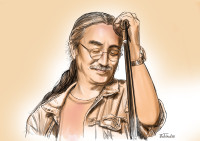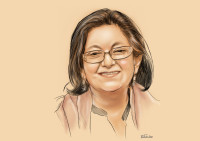Brunch with the Post
Sangeeta Thapa: The government has never understood the value of the arts
The art curator talks about her three decades working with contemporary Nepali artists and why art needs to be political.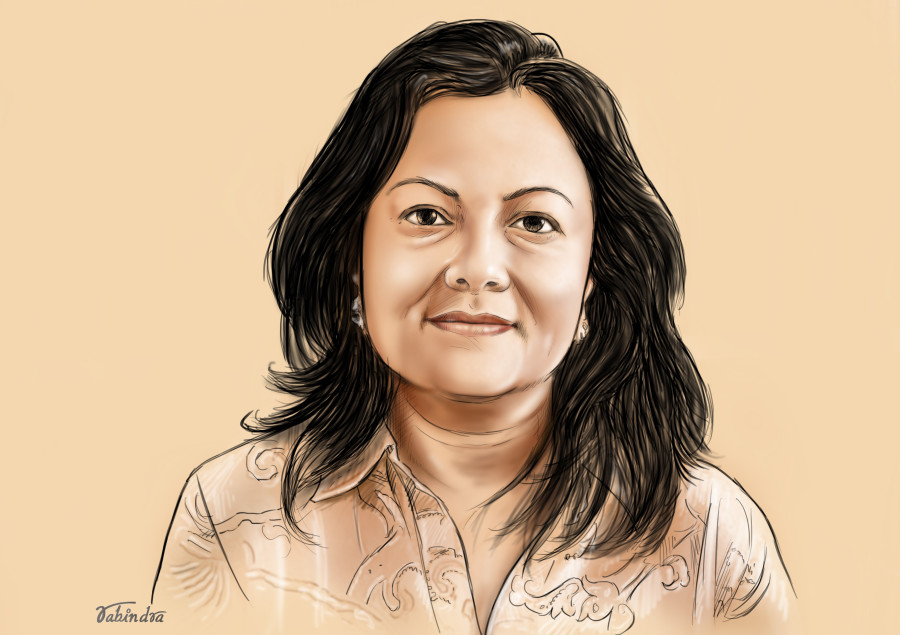
Pranaya SJB Rana
Baber Mahal Revisited is a forbidding place, so upmarket that you’d have to pat your pockets to make sure you have enough cash. The white stucco building complex, which was once the stables of Baber Shumsher Rana’s palace, is replete with low doorways and maze-like passages. At one cloistered end is Chez Caroline and this is where I am meeting Sangeeta Thapa, curator of the Siddhartha Art Gallery, which is just past the restaurant.
Thapa might be soft-spoken but she speaks with authority. After all, she’s been running the Siddhartha Art Gallery for 32 years now. As the custodian of the arts, she’s worked with almost every big name in contemporary art—from stately old masters like Shashi Bikram Shah and Birendra Pratap Singh to radical newcomers like Manish Harijan and Anil Shahi.
Before we sit down to eat, Thapa takes me over to the gallery and shows me her new exhibition, a collection of drawings and sculptures by the Japanese artist Setsu Suzuki. The drawings are in the style of old Japanese scroll calligraphy, only made with brown coffee instead of traditional ink. There is a calm Zen-like feel to these drawings and they feel perfectly suited to Siddhartha Art Gallery’s bare white space.
The gallery might be small but Thapa has spent the last 30 years turning it into Nepal’s premier art space.
The gallery, however, hasn’t always been in Baber Mahal Revisited. It was once on Kantipath, outside of Thamel.
“Just down the street, Kiran Manandhar had his Palpasa gallery and just farther up, Birendra Pratap Singh had his Srijana Art Gallery. Lalitkala Campus wasn’t too far away and there was J Art Gallery in Durbar Marg,” says Thapa, fondly recalling a time when Kathmandu’s art spaces were all in one cluster. “When there was an opening, we could go gallery-hopping.”
But times changed and so did space. Kantipath turned busy and the American recreation centre at Phora Durbar began to impose itself on the street. You could no longer park on the street and the noise from the street got too loud for an art gallery. Thapa moved Siddhartha Art Gallery to Baber Mahal in 1998.
“People say this place is too upmarket, but it provides a space where you can view art in tranquillity,” she says, defending her choice of space. “It’s quiet, peaceful and has a great vibe.”
But I wonder if the space is off-putting to many, especially younger people. On Kantipath, you could wander off the street but at Baber Mahal, you have to know where to go.
“People know us now,” says Thapa. “I’m really close to the students from Lalitkala [Campus], Sirjana [College of Fine Arts] and KU [School of Art] so they know where to find me. It’s also close to the Nepal Art Council so people who go there also come here, and vice-versa.”
The Nepal Art Council is not far from Siddhartha Art Gallery, close enough to walk over. But the two spaces are studies in contrast. While Siddhartha is pristine, fashionable and forbidding, the Nepal Art Council always has its gates open, even though the space is more chaotic, dirtier.
“We rent their space when we have shows that we can’t fit here,” says Thapa as a heaping mound of avocado and cherry tomatoes arrives. “Like when we did a retrospective of Amar Chitrakar, we were in Kantipath and we couldn’t put up 200 paintings. Same for Uttam Nepali and when we organised the Kathmandu Triennale.”
In 2017, Thapa, through the nonprofit Siddhartha Arts Foundation, launched the Kathmandu Triennale, an arts festival on a massive scale. Hundreds of artists, both Nepali and foreign, gathered in Kathmandu for 17 days that saw art use the city as canvas. The Triennale is part of a host of international arts events that are increasingly anchored in Kathmandu, like Photo Kathmandu, Film South Asia, Nepal Literature Festival and Jazzmandu.
For the next edition of the Triennale in 2020, Thapa will be working with curators Sheelasha Rajbhandari and Hitman Gurung, both of whom are young, contemporary artists. The festival will happen alongside Photo Kathmandu, with the two festivals drawing on each others’ audiences, says Thapa.
Thapa’s choice of Rajbhandari and Gurung is apt, given how engaged she is with the arts community in Kathmandu. She expresses joy at the mere mention of Kathmandu University’s Bachelor of Fine Arts’ final show. But that is no surprise as she came to understand Nepal through its art.
“I had never lived in Nepal when I came back in 1983,” she says. “I come from a political family but I didn’t know any Nepali. So when I came back, I couldn’t understand anything that my father-in-law [Surya Bahadur Thapa] was saying. I felt so out of place. I didn’t have any friends and I didn’t know anyone. So the artists became my friends, and I grew to understand Nepali politics through the eyes of the artists, rather than through the eyes of the Rastriya Prajatantra Party.”
Back then, the old masters were in their prime, she says. Artists like Shashi Bikram Shah, Uttam Nepali, Ujjwal Kundan Jyapu and Shashikala Tiwari were all actively making art. But it was also still the Panchayat and artists, as skilled as they might have been, weren’t as radical as they are today.
“The only political art was Shashi Bikram Shah’s, but even he was not attacking the system. He was part of the system,” says Thapa. “Shah was anti-war but he wasn’t anti-establishment. He talked about climate change and the apocalypse long before anybody else. There was also Birendra Pratap Singh, Durga Baral and Ragini Upadhyay. The rest were focussed on landscapes and tantric-inspired symbolism.”
I find Thapa’s reference to Durga Baral surprising, because many people know him as Batsyayan, Nepal’s finest satirical cartoonist whose work appears regularly on Kantipur, the Post’s sister paper. So I ask Thapa about Baral’s politics.
“He has a series called Tamasuk where he is talking about how the land of the indigenous people were taken away by getting them to fingerprint documents that they couldn’t read,” she explains. “He had this kind of social commentary in his work before anybody else.”
So is art more political now? I ask.
“Yes,” she affirms and goes on to provide an example. “I’m going to do a show by Lavkant Chaudhary on December 13, which is about the rights of the Tharus. The first Muluki Ain identified the Tharus as ‘katinnya’ and ‘masinnya’, which basically means that they were seen as ethnically expendable. If you had an army, you would put them on the front lines as cannon fodder. He is also talking about the Tikapur carnage, so it is directly political.”
For Thapa, it is important for art to be political, especially in a country like Nepal where so much of history from the margins has been erased or suppressed.
“As a curator, I don’t want to seem like I have a lopsided vision,” says Thapa. “I don’t want to just focus on beauty. As a citizen of this country, I think it is important for the arts to have a purpose, beyond just decoration. It has to tell the story of this country and be a reflection of the times.”
But I wonder if there is a market for art that provokes, that counters established narratives. After all, artists need to survive and someone needs to buy their art. Nepal is not famed for its collectors. But Thapa believes that the market is growing, even though contemporary art like the kind she chooses to put on is struggling.
“There’s mountain paintings, thangka paintings and us, contemporary art,” she says. “I think we’re struggling the most.”
But art is an investment and as Nepali artists receive international recognition for their talents, the market is certain to grow. The Austrian capital of Vienna recently had a retrospective of contemporary Nepali art, all the way from Lain Singh Bangdel to Samundra Man Singh.
“When we went to Vienna, many people were stunned,” says Thapa. “They didn’t know that Nepal has such a vibrant art scene.”
Many of the artists whose works were displayed in Vienna sell for thousands of dollars, and this is not just old masters like Shashi Bikram Shah and Laxman Shrestha but younger contemporary artists like Anil Shahi and Samundra Man Singh. Thapa tells me that she bought some of Shashi’s work for Rs150,000 and someone has now offered her Rs1.8 million. During one of Singh’s early shows, she sold one of his paintings for Rs1.5 million, prompting a queue outside the Siddhartha Art Gallery.
“People wanted to see a painting that could fetch 15 lakhs,” says Thapa. “It was a bandh day but people walked from Boudha to get here and there were people sitting outside on the ground waiting for the gallery to open.”
That kind of reception for an art show is rare, I think, as a string of young women come up to say hello to Thapa. There are air kisses all around as I pick at my quiche lorraine and think about art. I have attempted to write about art but my liberal arts education has equipped me with just so much art history. Most arts writing in Nepal, whether in Nepali or English, is woefully inadequate. Why is that, I wonder out loud.
“In India, Pakistan and Bangladesh, there are amazing people writing about art,” says Thapa. “Those people wield so much power. People like Ranjit Hoskote and Geeta Kapur, they can make or break your show by writing about it. There are no people like that in Nepal. That’s because our journalists don’t come from an art history background. There are not enough people studying writing and critical thinking.”
But Thapa gives the media its due. Nepali art is where it is today because of the media, she says.
“They might not have understood the whole hog but the media has understood the value of the arts,” she says. “The government has done nothing for the arts.”
The government’s lack of interest in the arts shows in how the ministry of culture has been shunted from one end to the other. At various points in time, the culture ministry has been clubbed together with the ministry of women and the ministry of sports. Now, culture sits alongside tourism and civil aviation.
“Culture needs respect,” says Thapa. “There needs to be a separate ministry for it, but they [those in government] don’t understand the need for one. And this is largely due to our education. What does a poor country need? It needs doctors and engineers. They never understood the value of the arts.”
ON THE MENU
Chez Caroline, Baber Mahal
Salade avocado: Rs 780
Quiche lorraine: Rs 780
Coffee: Rs 230
Tea: Rs 200




 6.84°C Kathmandu
6.84°C Kathmandu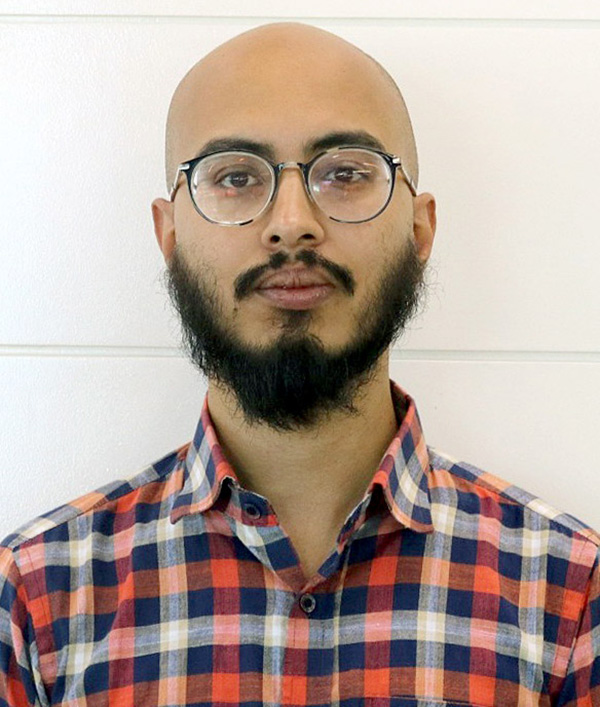


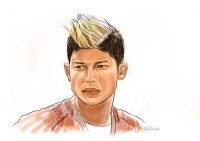
.jpg&w=200&height=120)
